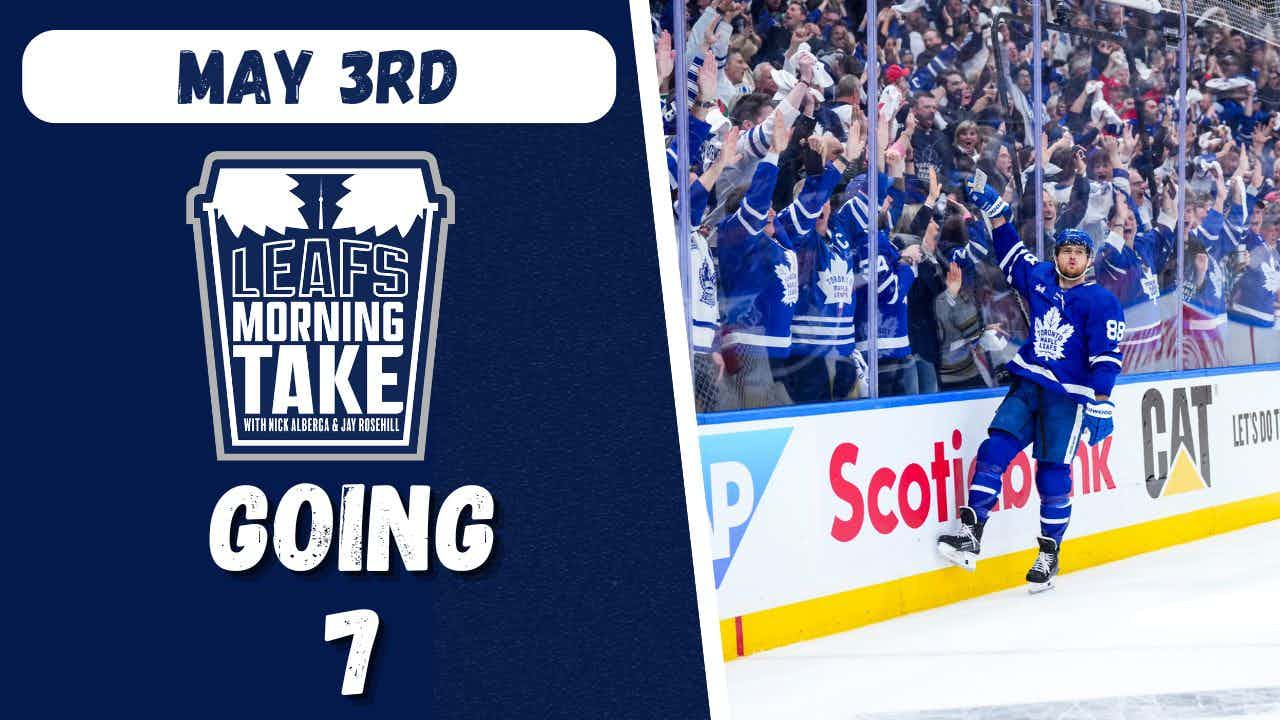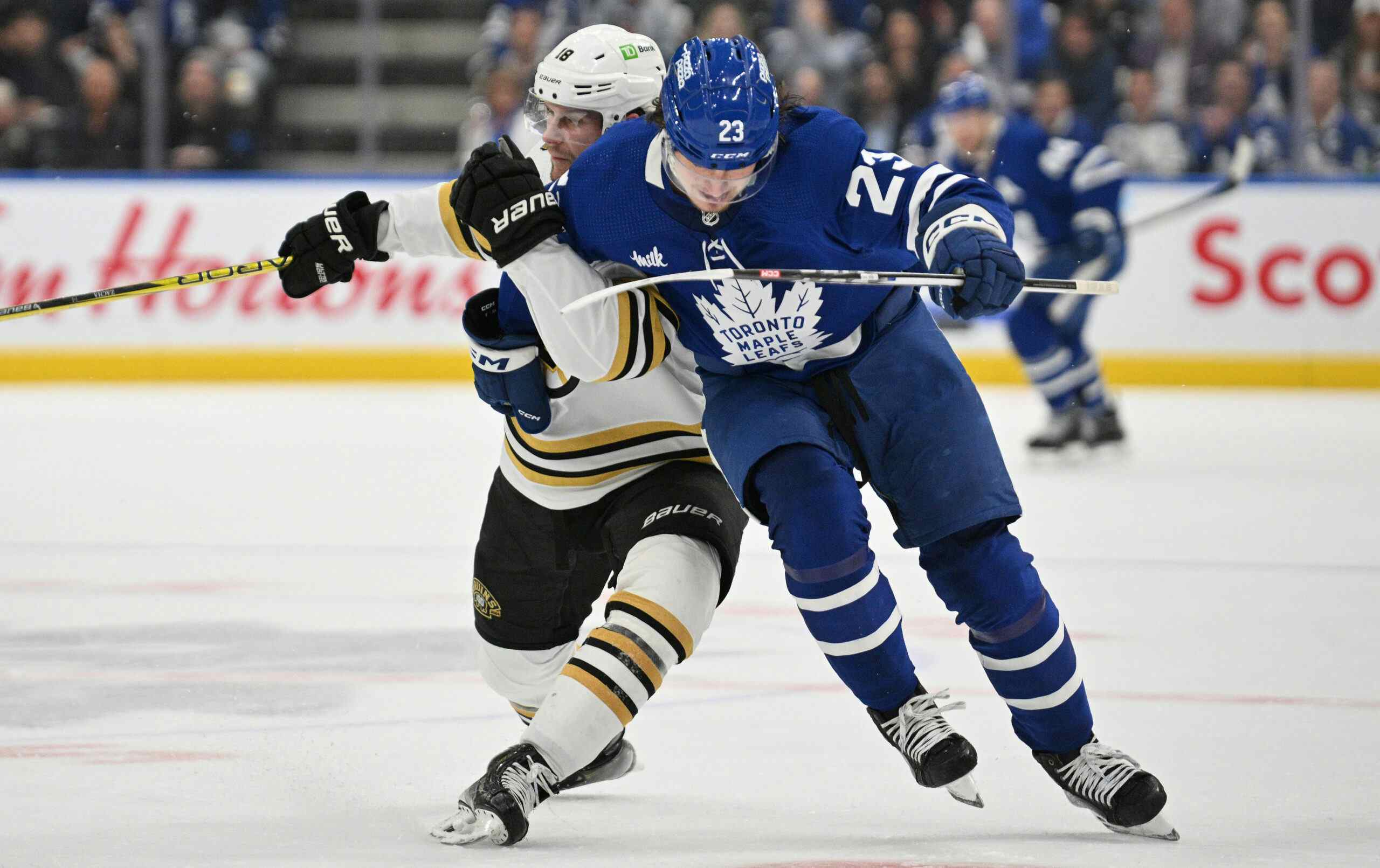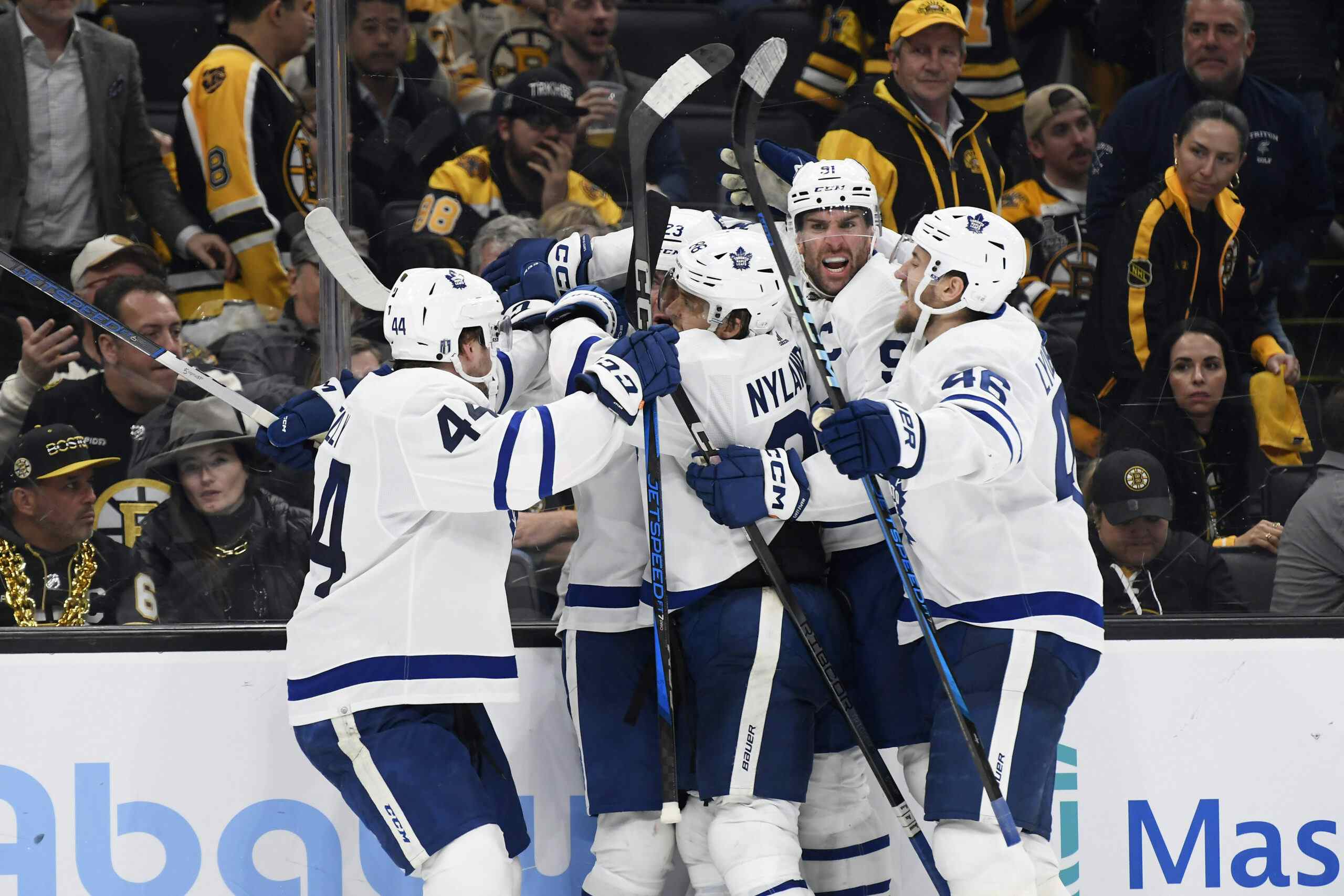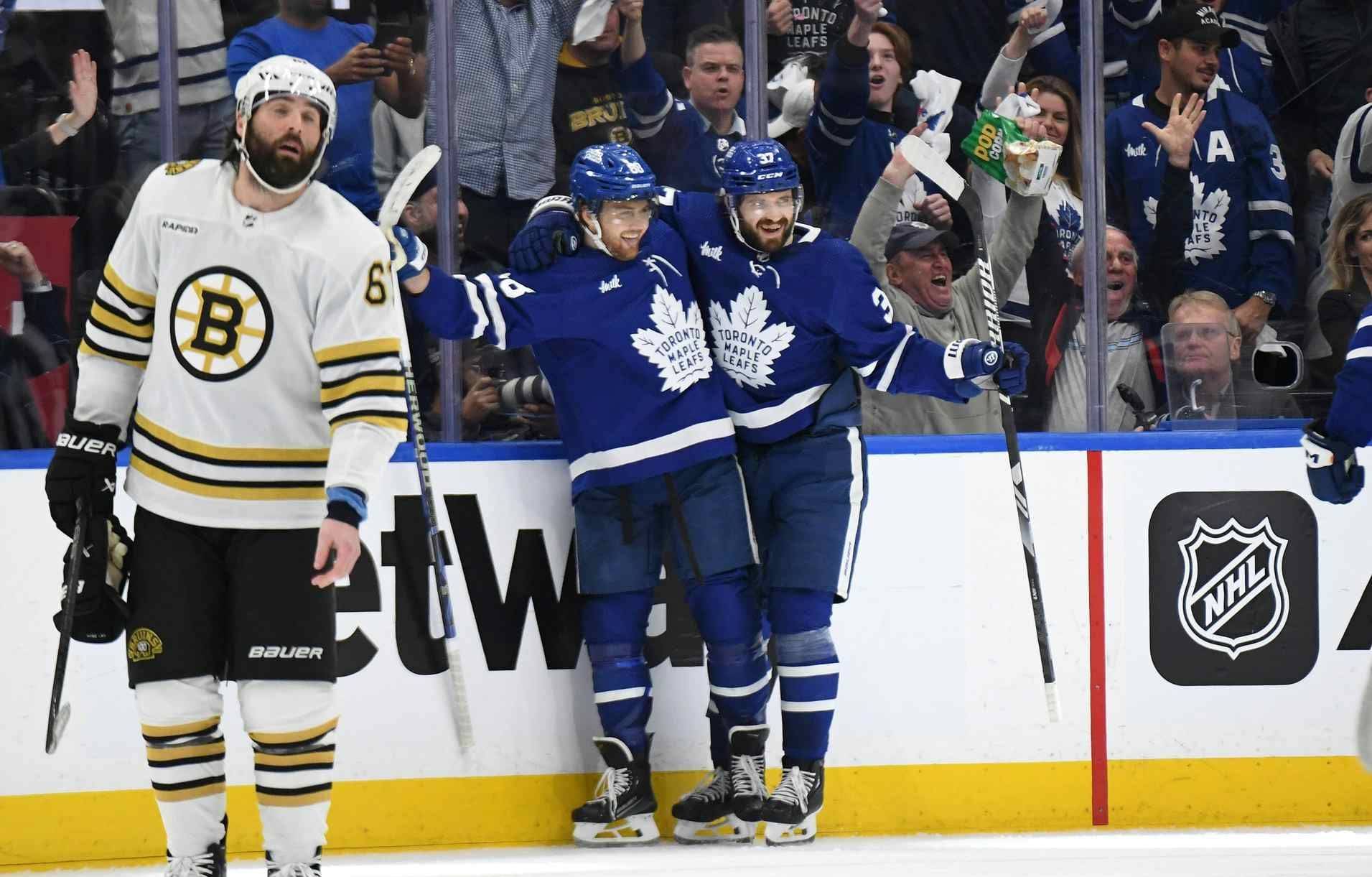In the 2017 draft, the Leafs avoided the bottleneck and amassed an island of misfit toys
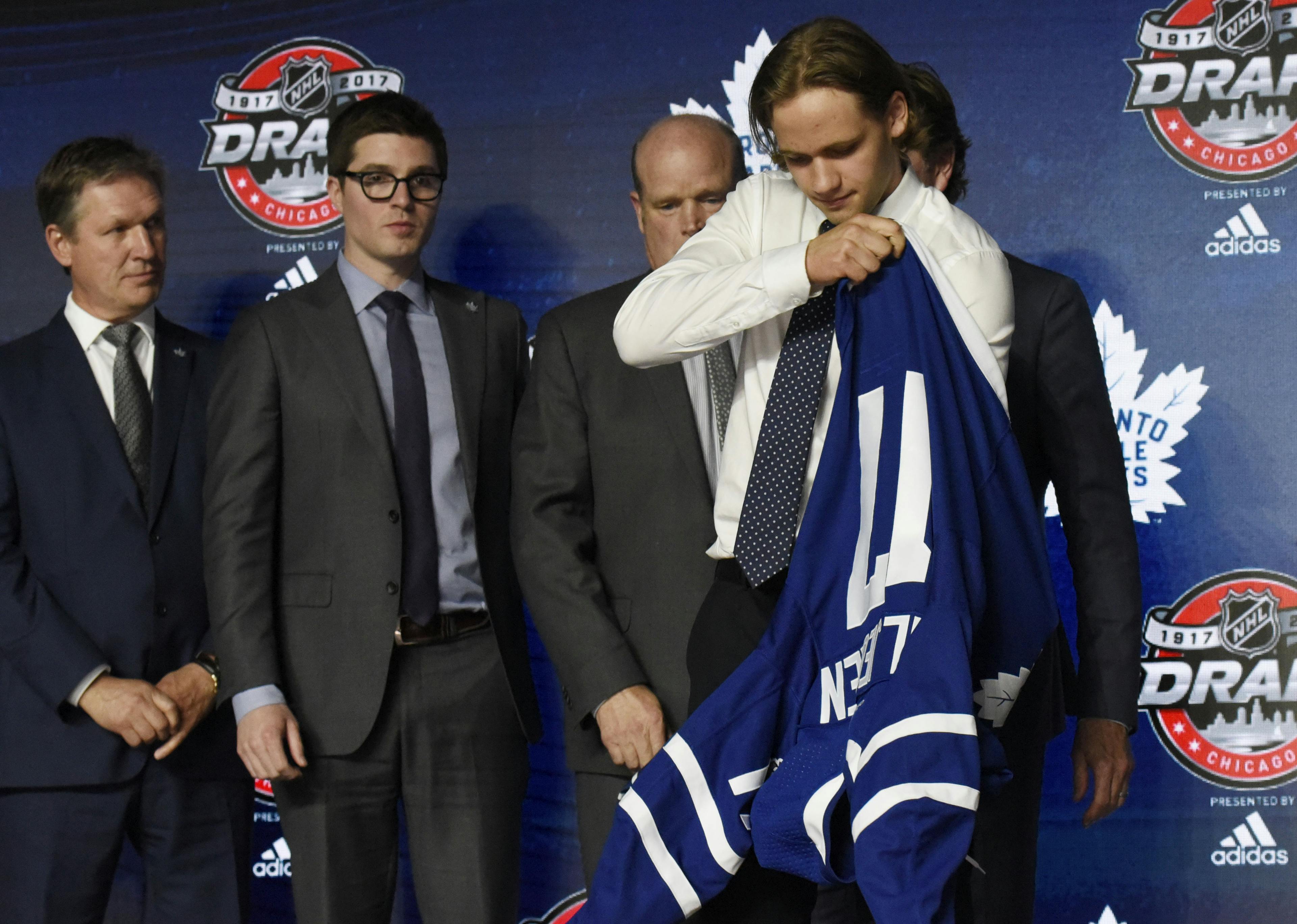
The dust has settled and the picking is over. The Toronto Maple Leafs have left the 2017 NHL Entry Draft seven prospects richer, walking away with Timothy Liljegren, Eemeli Rasanen, Ian Scott, Vladislav Kara, Fedor Gordeev, Ryan McGregor, and Ryan O’Connell. It’s a class that has a lot of the fanbase wondering what exactly was the thought process here.
Maybe it’s a champagne problem. After all, their 2015 Draft is now the measuring stick for how this group is evaluated. It’s easy to see why, too, given that they did most of the things that the draft analytics community recommends that weekend (trading down for quantity, and drafting high skill/upside over size/readiness). That year already appears to be paying dividends; Mitch Marner is a star NHL forward just a year into his pro career, Travis Dermott, Andrew Neilsen, and Dmytro Timashov were useful players on the Marlies this year, Jeremy Bracco and Jesper Lindgren were very impressive in their leagues, and while Toronto walked away from Stephen Desrocher and Nikita Korostelev a few weeks ago, there’s suspicion that they were among the best unsigned draft picks of the league-wide pile, left behind only due to a glut of internal options.
So, with that in mind, Toronto’s last two years, that some have described as reaching, some have described as alternate angles of market inefficiencies, and others have declared are a return to previous lines of thinking, don’t feel quite as sexy as the first love of the mostly-assembled Shanaplan era.
On the surface, that rings true this time. They drafted just seven players, the standard number but their fewest since 2014. They drafted just one winger and one centre, to go with four defencemen and a goaltender, making it look like a “position of need” draft. Then there’s the size. Oh, the size. Rasanen is 6’7, Gordeev is 6’6, Scott is 6’3, and Kara and O’Connell are 6’2. Not a single one of these guys begin their description of their height with a 5, which isn’t a bad thing in a vacuum but is a departure from the idea of cheating the system by drafting every skilled short guy passed over by the rest of the league.
When looked at straight forward, it’s a bit easy to lose sight and lose confidence. But there are two more angles I’d consider before calling this a wasted draft.
The Bottleneck
Something that I’ve talked about here a lot over the past few weeks is the beautiful disaster that the organization finds itself in up front. Amassing high-upside skilled prospects at the start of the serious, intentional stage of the rebuild have left them with the best, deepest young forward core in hockey. Other NHL teams can’t keep up with their young NHLers. The AHL is filled to the brim, often with guys who could be NHLers. The ECHL is filled more than other teams attempt to do, often with guys who should be AHLers.
It sounds really great until it’s time to either pump or dump a prospect or two. We’re seeing that right now with Josh Leivo, Brendan Leipsic, and Kerby Rychel; people were correct in being worried about losing one of them come expansion draft time, but the reality is that, even with all of them progressing well as NHL prospects, the Leafs might not have time to graduate any of them before they have to flirt with the waiver wire. That made losing Leipsic a little more palatable. As mentioned in the second paragraph, losing Korostelev and Desrocher came down to them being decent but not top-end prospects in positions where the Leafs had better options, which is a dealbreaker when flirting with a 50-contract limit.
It’s hard to say whether the Leafs drafted by position yesterday. “It wasn’t really a mandate,” assistant GM Mark Hunter said to the media yesterday. “They fell to us, and we felt it was best at that moment, so we ended up taking the defencemen.” However, the ratio seems too high to be a coincidence; picking four defencemen in seven picks marks the first time Toronto have used more than half of their selections on the position since 1999, where they went five for nine. Coincidentally, that was the worst draft in Leafs history:

Hopefully, that’s not a bad omen. But the point is that the long-term pipeline there was pretty shallow until yesterday; outside of the Marlies, they had just four prospects developing on the point (JD Greenway, Keaton Middleton, Nicolas Mattinen, and Jesper Lindgren). That number has doubled as of yesterday, increasing their chances of having a suitable internal option capable of graduating to the NHL after the current wave of young players has made their push.
While “best player available” usually rings true, and you definitely don’t want to throw away picks on kids with “role player” upside, there’s a value in giving the player’s position a little bit of weight, especially for Toronto right now. They’ve got a crush load that’s hard to break through up front, and as good as “get top talent and fill the rest up later” sounds now, we also can’t underestimate how completely broken the market for minute-eating defenceman has become in the past calendar year. “I think there’s a lot of things that you can do,” Mike Babcock said of the trade market yesterday. “As you can see, [Travis] Hamonic went to Calgary. It’s expensive to get marquee [defencemen] in our league. It’s better if you draft them, develop them, and have them coming.”
So long as they see legitimate upside in the defencemen they took, it’s hard to fault them for wanting to shelter themselves against the rising tide.
Development location matters too. Liljegren is the closest to NHL ready, but he can develop in Sweden instead of the Marlies should they decide to leave the other prospects some breathing room. Rasanen, Gordeev, McGregor, and Scott are all in their first draft years, and as such, can stick around in junior for another year or two and slide into the Marlies when the current class of centres, defencemen, and goalies have either graduated or moved on. O’Connell picked college hockey for his education, so he’ll probably remain off the books for another half decade, and Kara can likely stay in Russia for quite a while until he’s made some noise in the KHL. While internal competition is nice, there’s enough of it right now and they can navigate this group of seven around it, which at the moment is quite important.
The Island of Misfit Toys
Another thing that was pretty easy to pinpoint as the scouting reports started to come in. What’s the notable flaw for each prospect?
- Liljegren: Didn’t take the extra step in a year where he battled through mononucleosis.
- Rasanen: Has only played one year of junior, spent the bulk of it adjusting to the North American game.
- Scott: Played starters minutes for one of the worst teams in the WHL.
- Kara: Played his first season of pro hockey for a bottom five team in the VHL with scoring issues.
- Gordeev: Recently converted to defence from forward, only has one year of major junior experience, still getting used to the decision making process from the point.
- McGregor: Missed out on an offseason of training due to a concussion suffered at the end of 2015/16.
- O’Connell: Has yet to play beyond AAA/Prep School, making him a bit of a big fish in a small pond.
So you’ve got a lot of players getting used to new environments, travelling roads less travelled by, or spending their seasons fighting through ailments. A few players who were expected to deliver a little more this year, but had something in the way.
The good news is, a lot of that appears to be fixable. Liljegren and McGregor should be healthy heading into next season. Rasanen and Gordeev will get another year to ride their adjustment curves. The Leafs have some roots in Russia and it wouldn’t shock me to see them take advantage of that to get Kara a better situation if Bars Kazan continues to be a mess in the VHL next year. O’Connell will play a year of Junior A to get him ready for the NCAA, and, well, we’ll see if Scott gets traded, his team gets better, or he just continues to fall under baptism-by-fire.
The point being, their biggest roadblocks all seem to be solvable, and solvable soon. The real judgement comes once those things are out of the way, but with a bunch of players in their system already on the road to success, it appears the Leafs decided to get in on the ground floor on a few players, in hopes of making being able to optimise their paths and allow them to harness their potential.
A good example to look up to for Rasanen, Gordeev, and O’Connor might be 2015 pick Andrew Neilsen, who didn’t make it to AAA until he was sixteen and by his Age 20 season, was one of the AHL’s top rookies. The Leafs bought early on him and it’s working out quite nicely now.
Is it the safe strategy? Heavens, no. Is it the sound one? Probably not. Is it one that they’re in the position to take the risk on? Well, yeah.
So, What’s The Final Verdict?
Listen, I’m not going to act like an authority on prospect scouting or development. A thousand other writers will surely volunteer themselves to you if you’d like to hear that. My perspective on the second day comes more from the angle of process and development paths, and I see a logic here that’s not as apparent in the biographical numbers or the boxscore numbers.
Personally speaking, I am one of those dorks who want every draft to be a 2015 draft, where they take the NHL’s idea of risk and the data’s version of a safe bet and rack up a bunch of scorers. For that reason, I’m not going to pull the whole “Leafs are playing 8-dimensional backgammon here and this is actually an A+” conclusion.
But it’s hard to dispute that if they’re able to get some of these guys moving in the right direction, Toronto may have made a top-heavy depth chart into a well rounded one. There’s a lot of work still left to do to get these kids there, and the pressure is on the Leafs front office to help them, but while it’s hard to be left excited by rounds 2-7, it’s a little easier to be left understanding.
Recent articles from Jeff Veillette

